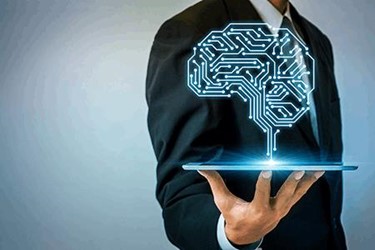Beyond The Hype: How AI Will Drive The Rise Of Real-Time Analytics In Healthcare
By Esteban Rubens, Pure Storage

Interest in artificial intelligence applications in radiology, clinical settings and operations is exploding, but its use in everyday settings in healthcare thus far has been more hype than reality.
Now, it’s about to get real. AI’s shift from lab and research departments to clinical settings will get much faster over the next several years, driving an urgent need for more real-time analytics.
Radiology is fueling much of it, but the demand for real-time data analysis runs across the industry. Over the next two to three years, innovations in electronic health records (EHR), revenue cycle, and operations will see AI enabled throughout the healthcare system. AI will be integrated into the clinical workflow in existing tools like EHR and PACS, empowering practitioners with just-in-time data.
Images and data will be automatically routed to AI engines in order for clinically relevant information to be extracted in real time. Instead of wading through thousands of images or documents, the most important and relevant pieces of information will bubble up, identified by AI – whether it's textual information or image data pinpointing a nodule, tumor or something that changed in a scan.
Let’s take a closer look at what’s driving these moves, particularly in radiomics.
Bridging The Gap Between Research And Practice
One of the big promises of AI is in weeding out findings of “normal” in radiology so that radiologists can focus their time on images that require attention. That’s crucial as the volume of images a radiologist must review has been growing dramatically, a trend that is expected to continue, and the demand for radiologists outstrips the number of new radiologists getting trained:
- Medical imaging is being used in more settings – it’s growing exponentially in developing countries in Africa and Asia, for example, thanks to new mobile ultrasound technologies connected to smartphones.
- Advanced imaging modalities such as digital breast tomosynthesis (DBT) – 3D mammography – are generating massive data sets.
The need to train scores of algorithms that are clinically useful – and executed in real-time – is at the heart of the AI challenge in radiology. In patient care settings, training algorithms must happen far more quickly than is common in most research settings today, where there is less time pressure.
Consider a medical facility that is a designated stroke center, with an SLA that includes strict time requirements for delivering a diagnosis when a patient comes into the emergency department as a possible stroke victim, in order to ensure the right treatment is administered in time to make a difference.
Radiologists are trained to quickly scan a set of images to see what might be going on with a patient. As AI comes into more practical use, it can assist those radiologists by sifting through massive amounts of data with great precision. The trick is that you have to tell the machines what to look for.
In AI, very narrowly focused algorithms are highly accurate in detecting very specific things – one for detecting subdural hematomas, for example, and another for detecting bleeds in the frontal cortex, while a third may scan for ischemic strokes. That means you must run the same images through many different algorithms to detect different possibilities.
Now, advancements in picture archiving and communication systems (PACS) are emerging to meet these urgent clinical time requirements in the age of AI. Vendors are working to develop PACS that can act as AI algorithm-routing engines – sending a head CT to a specific set of algorithms, an abdomen and pelvic CT to another group.
That activity means running 1,500 or 2,000 images through 10, 20 or even 30 algorithms, not just one. The amount of data transfer that generates is enormous.
Future-Proofed Infrastructure
As these new tools take hold, having the right infrastructure to support super-high performance – delivering speed and capable of handling lots of data – is paramount.
Real-time analytics is critical to a practitioner’s ability to deliver better patient care. A provider must have the right information available at the right time in the context of how they are interacting with a given patient. In the middle of a procedure, that means pinpointing the relevant image; seeing something new in an ER patient might mean surfacing a piece of data buried in the patient's medical history.
The underlying infrastructure platform is a big piece of enabling AI to happen as fast as it can, to ensure providers get that just-in-time and just-right piece of information.
Outside of radiology, over the next several years, real-time analytics will have an impact in many areas:
Enriching EHRs. Electronic health record solutions were not built for real-time data. That’s changing as vendors work to modernize their capabilities to generate and extract data as close to real time as possible – with new APIs and new ways to harness data.
Faster billing/ordering. AI deployments in revenue cycle applications will help organizations generate bills more quickly, with the goal of presenting bills to patients and families before they leave the hospital or practice. That’s critical, for example, for high-deductible health plans with higher-patient payments.
Changing workflows. Radiologists and other practitioners accustomed to working with retrospective data will find that near real-time is no longer good enough. Doctors trained in traditional paths to diagnose patients will find that with more and faster information those workflows will change.
The Road Ahead
The rise of real-time information and AI in healthcare is real. Within three years AI will touch every x-ray, according to one recent forecast, and within ten years, all CT scans will be evaluated by AI. Forward-looking hospital leaders should be preparing their organizations now so that they can take advantage of the opportunities provided by this technology.
